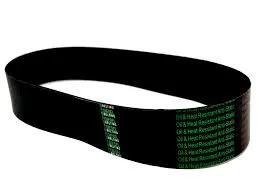- Arabic
- French
- Russian
- Spanish
- Portuguese
- Turkish
- Armenian
- English
- Albanian
- Amharic
- Azerbaijani
- Basque
- Belarusian
- Bengali
- Bosnian
- Bulgarian
- Catalan
- Cebuano
- Corsican
- Croatian
- Czech
- Danish
- Dutch
- Afrikaans
- Esperanto
- Estonian
- Finnish
- Frisian
- Galician
- Georgian
- German
- Greek
- Gujarati
- Haitian Creole
- hausa
- hawaiian
- Hebrew
- Hindi
- Miao
- Hungarian
- Icelandic
- igbo
- Indonesian
- irish
- Italian
- Japanese
- Javanese
- Kannada
- kazakh
- Khmer
- Rwandese
- Korean
- Kurdish
- Kyrgyz
- Lao
- Latin
- Latvian
- Lithuanian
- Luxembourgish
- Macedonian
- Malgashi
- Malay
- Malayalam
- Maltese
- Maori
- Marathi
- Mongolian
- Myanmar
- Nepali
- Norwegian
- Norwegian
- Occitan
- Pashto
- Persian
- Polish
- Punjabi
- Romanian
- Samoan
- Scottish Gaelic
- Serbian
- Sesotho
- Shona
- Sindhi
- Sinhala
- Slovak
- Slovenian
- Somali
- Sundanese
- Swahili
- Swedish
- Tagalog
- Tajik
- Tamil
- Tatar
- Telugu
- Thai
- Turkmen
- Ukrainian
- Urdu
- Uighur
- Uzbek
- Vietnamese
- Welsh
- Bantu
- Yiddish
- Yoruba
- Zulu
des . 15, 2024 03:56 Back to list
Understanding the Role of Serpentine Belt in Alternator Function and Maintenance
Understanding the Alternator and Serpentine Belt A Comprehensive Guide
The modern automotive engine relies on numerous components working in harmony to deliver optimal performance. Among these components, the alternator and serpentine belt play crucial roles in maintaining the vehicle's electrical system and engine efficiency. Understanding their functions, maintenance, and common issues can help car owners prolong the life of their vehicle and avoid costly repairs.
What is an Alternator?
The alternator is an important component in an automobile's electrical system. Its primary function is to convert mechanical energy produced by the engine into electrical energy, which is used to recharge the vehicle's battery and power various electrical components such as lights, radio, power windows, and more. Unlike older vehicles that used a direct current (DC) generator, modern cars use alternators because they are more efficient and capable of producing higher output at varying engine speeds.
The alternator works in conjunction with the battery and is driven by the engine's crankshaft via the serpentine belt. As the alternator spins, it generates electricity through electromagnetic induction. This process requires the use of a rotor and stator, which work together to produce alternating current (AC), which is then converted to the direct current (DC) necessary for automotive applications.
The Serpentine Belt Explained
The serpentine belt, also known as the drive belt, is a long, continuous loop made of rubber and reinforced with materials like polyester. It plays a critical role in connecting various engine components, including the alternator, power steering pump, water pump, and air conditioning compressor. Its design allows it to transmit power efficiently from the engine's crankshaft to multiple accessories using a single belt, which reduces weight and increases reliability compared to older systems that used multiple belts.
The serpentine belt is essential for the operation of the alternator, as it transfers power from the engine, enabling the alternator to generate electricity. If the serpentine belt becomes worn or breaks, the alternator—alongside other components—will cease to function properly, which can lead to a dead battery and additional electrical failures.
alternator serpentine belt

Maintenance and Inspection
Maintaining the alternator and serpentine belt is crucial for ensuring the longevity of your vehicle. Regular inspection of the serpentine belt should be part of your routine vehicle maintenance. Look for signs of wear such as cracks, fraying, or glazing on the belt surface. Generally, serpentine belts should be replaced every 50,000 to 100,000 miles, but this can vary depending on the vehicle and driving conditions.
It's also essential to pay attention to any unusual noises coming from the engine bay, such as squeaking or squealing sounds, which may indicate that the serpentine belt is slipping or that the alternator bearings are failing. If either component is showing signs of distress, it’s imperative to address it immediately to prevent further damage.
Common Issues and Troubleshooting
While both the alternator and serpentine belt are designed for durability, they are not immune to issues. The most common problems related to the alternator include electrical failure, bearing wear, and voltage regulation issues. A failing alternator may result in dimming headlights, warning lights on the dashboard, or a dead battery.
For the serpentine belt, issues such as cracking, stretching, and breaking can occur due to age, exposure to heat, and the wear and tear of regular use. A broken serpentine belt can lead to a sudden loss of power to the alternator, ultimately resulting in electrical failure.
Conclusion
Understanding the critical roles of the alternator and serpentine belt is vital for any vehicle owner. Regular maintenance and inspections can help prevent issues and extend the life of these components. With proactive care, you can ensure your vehicle operates efficiently and reliably, keeping you safe on the road. Remember, when you notice any signs of trouble, consult a professional mechanic to avoid more significant problems down the line.
-
Korean Auto Parts Timing Belt 24312-37500 For Hyundai/Kia
NewsMar.07,2025
-
7PK2300 90916-T2024 RIBBED BELT POLY V BELT PK BELT
NewsMar.07,2025
-
Chinese Auto Belt Factory 310-2M-22 For BMW/Mercedes-Benz
NewsMar.07,2025
-
Chinese Auto Belt Factory 310-2M-22 For BMW/Mercedes-Benz
NewsMar.07,2025
-
90916-02660 PK Belt 6PK1680 For Toyota
NewsMar.07,2025
-
drive belt serpentine belt
NewsMar.07,2025

